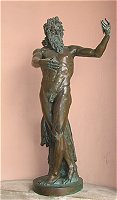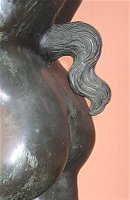 |
FaunsThere are more fauns amoung the Ringling Museum sculptures than you might have noticed. The reason is that they look so "human". It already starts when you enter the Ringling Museum of Art. The sculpture on the right in the entrance lobby is a typical example. See the sculpture here on the left. But if you walk up close and look behind at his back you'll notice a tail. Inside the courtyard there are several more. See photos at the bottom of this page. |
What are Fauns?
In Roman mythology, fauns are place-spirits of untamed woodland. Romans connected their
fauns with the Greek satyrs, wild and orgiastic drunken followers of
Dionysus. However, fauns and satyrs were originally quite different creatures. Both have
horns and both resemble goats below the waist, humans above; but originally satyrs
had human feet, fauns goatlike hooves. The Romans also had a god named Faunus ( a
nature spirit) and a goddess Fauna, who, like the fauns, were goat-people.
Because most Roman sculpture was based on Greek sculpture, the fauns have human feet, small horns, pointed ears, a tail growing from their waist, rather than from their tail-bone and goat skins. And, because of the Dionysus (Bacchus) connection, -the god of wine and merryment- , you often see grapes (wine), cymbals and a pan flute.
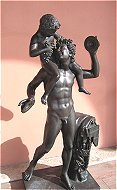 click to enlarge |
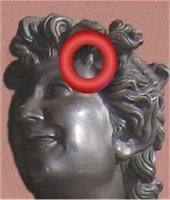 |
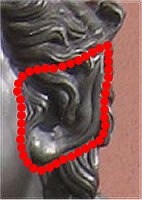 |
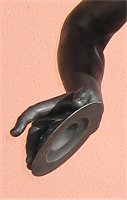 |
One of the famous myths of Pan involves the origin of his trademark pan
pipes. Syrinx was a beautiful nymph beloved by the satyrs and other wood dwellers. She
scorned them all. As she was returning from the hunt one day, Pan met her. She ran away
and didn't stop to hear his compliments, and he pursued until she came to the bank of a
river where he overtook her. She had only time to call on the water nymphs for help. Just
as Pan laid hands on her, she was turned into the river reeds. When the air blew through
the reeds, it produced a plaintive melody. The god took some of the reeds to make an
instrument which he called a syrinx, in honor of the nymph.
Satyr
A wild creature of Greek legend whose bottom half is that of a beast, usually including a
goat's tail, flanks, and hooves, and whose top half is that of a man. The Roman version of
the satyr is the Faun, a disciple of the god Faunus.
Satyrs are closely associated with the god Dionysus and known for their debauchery. The
female counterpart of the satyr is the nymph.
Some other fauns in the courtyard. More details in the Sculpture Panorama.
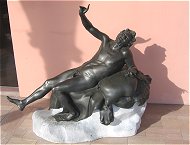 |
 |
 |
 |
 |
